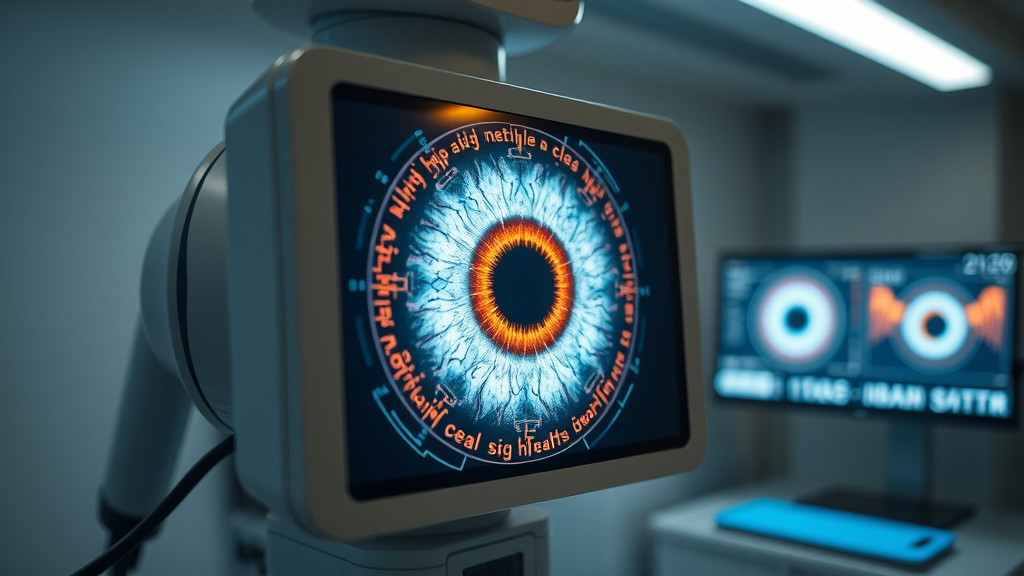Have you ever wondered what your eyes say about your health? Welcome to the fascinating world of iridology! This ancient practice offers a unique lens through which we can understand our bodies, revealing not just potential ailments but also pathways to wellness. In our Complementary Health Series: Iridology, we’ll delve into the intricacies of this art, empowering you to decode the messages hidden in your iris. Whether you’re a curious novice or a seasoned practitioner, mastering iridology can transform how you approach health and well-being. Let’s explore together!
Introduction to Iridology

Iridology, a form of alternative medicine, is the study of the iris, the colored part of the eye. Practitioners believe that patterns, colors, and other characteristics of the iris can provide information about a patient's systemic health. This method of eye diagnosis offers a non-invasive way to gain insights into the state of various organs and systems within the body.
What You'll Learn in Iridology
Understanding the basics of iridology: Learn about the foundational principles that govern this practice.
How iridology can reveal health insights: Discover the types of health issues that can be detected through iris analysis.
Practical tips for analyzing irises: Gain hands-on tips for interpreting iris charts and assessing health conditions.
The History and Origin of Iridology
Ancient Roots and Modern Revival

The history of iridology dates back to ancient times when it was practiced in various forms across different cultures. However, it was in the 19th century that Hungarian physician Ignaz von Peczely is credited with developing modern iridology. His observations and studies laid the groundwork for the practice as we know it today, leading to a revival in interest during the 20th century.
How Iridology Works
The Science Behind Iridology
Iridology is based on the belief that each part of the iris corresponds to a specific organ or part of the body. By studying the iris patterns, colors, and textures, iridologists claim to detect underlying health issues. While the practice is not supported by scientific evaluations, proponents argue that it offers valuable insights into a person's health.
Mapping the Iris: Zones and Indicators
The iris is divided into zones that correspond to different systems and organs in the body. Iridologists use iris charts to map out these zones, looking for signs like discolorations or pigment patterns that might indicate health problems. Although not a valid diagnostic tool, many believe it complements other holistic health assessments.
Benefits of Iridology
Non-invasive health assessment: Offers a painless and non-intrusive method for understanding health issues.
Holistic approach to wellness: Encourages a comprehensive view of health, considering the interconnectedness of body systems.
Early detection of potential issues: Provides insights that might prompt further medical evaluation or lifestyle changes.
Iridology Techniques
Tools and Equipment Used in Iridology
Iridologists often use specialized tools such as magnifying glasses or digital cameras to closely examine the iris. These tools allow them to capture detailed images that can be compared to iris charts for analysis.
Steps to Conducting an Iridology Session

Conducting an iridology session typically involves several steps. First, an iridologist will take a detailed history of the patient's past medical problems. Then, using specialized equipment, they will analyze the iris for specific signs or markers. Finally, they interpret these findings to provide insights into the patient's health conditions.
People Also Ask About Iridology
How legit is iridology?
Iridology is considered controversial because it is not supported by scientific research as a reliable diagnostic tool. However, some individuals find it beneficial as part of a holistic health approach.
What can iridology detect?
Proponents claim iridology can detect underlying health issues such as weakened immune systems or liver damage. Nevertheless, these claims are not scientifically validated.
How much does an iridologist cost?
The cost of an iridologist session varies widely depending on the practitioner and location. It's advisable to contact an eye doctor or alternative health practitioner for specific pricing.
Has iridology been proven?
Iridology has not been proven as a scientifically valid diagnostic method. It remains a controversial practice due to the lack of scientific evidence supporting its claims.
Expert Insights and Quotes on Iridology
"Iridology offers a window into understanding the interconnectedness of our body systems."
Iridology: Practical Applications
Integrating Iridology into Holistic Practices
Many holistic practitioners integrate iridology into their practices to complement other alternative therapies. It can be used alongside nutrition, herbal medicine, and lifestyle counseling to provide a more comprehensive approach to health.
Case Studies and Success Stories
Numerous anecdotal case studies have been reported where individuals claim to have benefited from iridology. These stories often highlight improved health outcomes and early detection of health issues, although they are not backed by scientific research.
FAQs on Iridology
Can iridology replace traditional medical diagnostics?
No, iridology should not replace traditional medical diagnostics. It is best used as a supplementary tool alongside conventional medical assessments.
Is iridology suitable for everyone?
Iridology can be utilized by most individuals seeking a holistic approach to health. However, it should be approached with caution and not used as a sole diagnostic tool.
How often should one get an iridology assessment?
The frequency of iridology assessments depends on the individual's health goals and needs. Some may choose to have regular assessments as part of their holistic health routine.
Key Takeaways from Iridology
Understanding iridology's potential and limitations: Recognize that while iridology offers intriguing insights, it should not replace traditional medical diagnostics.
Recognizing signs of health through your eyes: Learn to observe potential signs of health conditions through iris analysis.
Exploring new pathways to wellness: Discover how iridology can be integrated into a broader wellness strategy.
Conclusion: The Future of Iridology

Iridology continues to be a topic of interest within the realm of alternative medicine. While its scientific validity remains debated, its potential to complement holistic health practices is undeniable. As technology advances, there may be new opportunities to explore the capabilities of iridology further. For those intrigued by the mysteries of the eye and its connection to overall health, iridology offers an exciting avenue to explore.
 Add Row
Add Row  Add
Add 




Write A Comment